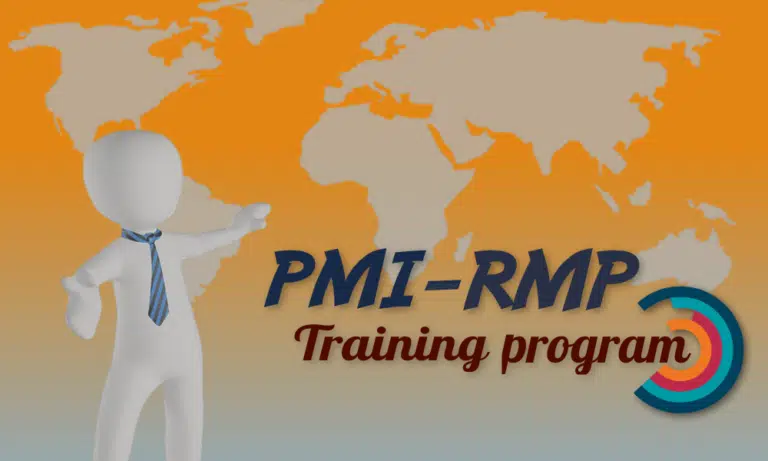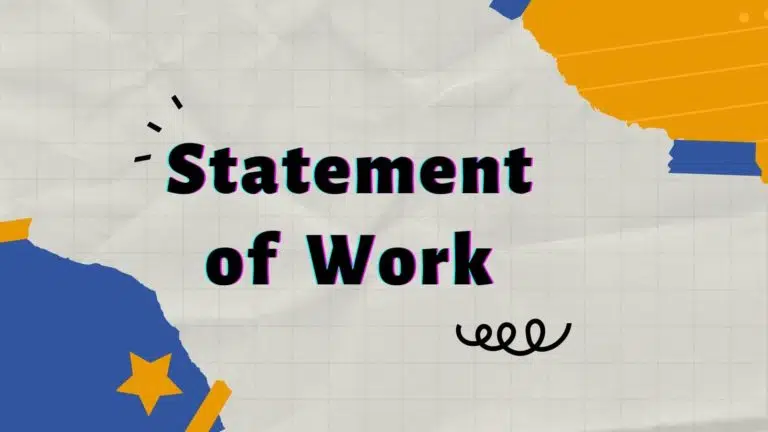In project management, adaptability is the key to success. Rolling wave planning is a progressive elaboration strategy that adapts to changing circumstances and uncertainty.
In today’s post, I will explain rolling wave planning and how you can use it for your project to benefit from it.
Let’s get started.
What is Rolling Wave Planning?
In rolling wave planning, instead of initially planning out every detail for the complete project, you focus on short-term goals while keeping an eye on the distant work. This method allows you to adjust your course as the project progresses and you gather more information.
According to the PMBOK® Guide, “Rolling wave planning is an iterative planning technique, in which the work to be accomplished in the near term is planned in detail, while work further in the future is planned at a higher level. It is a form of progressive elaboration applicable to work packages, planning packages, and release planning when using an Agile or Waterfall approach.”
Project managers can use rolling wave planning to develop broad plans for an uncertain future while completing short-term work with detailed planning.
You divide the work into waves. The close-by work is planned in great detail, and the far-off work is defined at a high level. As the project progresses, the scope becomes clearer, and planning improves.
Benefits of Rolling Wave Planning Methods
- Plans for an Unpredictable Future: Even when information is available at the beginning of a project, you cannot predict the future, so rolling wave planning is helpful. Long-term detailed planning is ineffective for longer projects.
- Saves Time: A “start now and figure the rest out later” approach has a shorter work duration, thereby improving the robustness of WBS and the quality of the outcome. Starting a project early without waiting for all the details will save time.
- Minimizes Project Delays: Even though the future is uncertain, risk management helps mitigate risks. It takes effort in the early stages but helps avoid project delays later.
- Improves Efficiency: Rolling wave planning provides project managers with a buffer to minimize project risks and/or mistakes while focusing on critical paths and milestones.
- Provides Adaptability for Constant Changes: Rolling wave planning operates iteratively. It enables the team to focus on immediate objectives while adjusting for long-term objectives. You can update plans when new information appears, or new risks are discovered.
- Sustains the Project Lifecycle: One-time planning has more chances of failure, but frequent planning helps sustain the project. Rolling wave planning ensures that team members understand their roles and responsibilities.
- Provides Effective Resource Allocation: Resource allocation can cause conflicts in the project. The rolling wave planning technique ensures effective resource allocation and avoids conflicts.
- Monitors Progress: Rolling wave planning keeps project stakeholders updated on the project’s progress and increases team accountability.
Which Industries Can Use Rolling Wave Planning?
- Software Development Projects: Software projects involve uncertainties. The requirements are not always clear up front, and the scope of work changes frequently. Therefore, rolling wave planning is perfect for software development projects.
- Research and Development Projects (R&D): In the early stages, R&D projects often lack clarity on deliverability. So, rolling wave planning is very useful for these projects.
- High-Tech Projects: Innovative projects (e.g., New Product Development [NPD]) capitalize on the rolling wave planning strategy to exploit emerging opportunities.
Rolling Wave Planning Vs Agile Sprints
Agile sprints and rolling wave planning are iterative processes with many commonalities. Both processes develop, test, and update the product until the client accepts it.
A few differences between these processes are as follows:

Rolling Wave Planning Steps
You can follow these steps for rolling wave planning:
- Prepare for the Rolling Wave: In this step, you will collect the project requirements and develop the project scope. You must ensure that you get the detailed scope of near-term work to develop detailed planning. For distant work, you will create a high-level plan.
- Divide the Project into Phases: Since the complete scope of work is unavailable, you will break the project into phases and take one phase at a time. This will help you decide your objective, complete the project incrementally, and send the deliverables to the client.
- Plan the First Wave: You will develop a plan for the first wave or phase, establish baselines and milestones, and assign roles and responsibilities to your team members. You can identify work for the next wave without making any rigid decisions. Decide the schedules for the commencement of the next wave.
- Start the First Wave: Complete the first wave. Build the deliverable and send it to the client or project sponsor.
- Repeat the Process: Repeat the process until the project is completed and the client accepts the final deliverable. After closing the project, conduct a retrospective analysis to identify areas for improvement.
When Should You Use Rolling Wave Planning?
You should use rolling wave planning when:
- The detailed scope of work is not available.
- There is no clarity on project deliverables.
- The project involves high-level innovation.
- You get a research and development project.
- The duration of the project is long.
Rolling Wave Planning Example
Here is an example of rolling wave planning for a construction project:
- Initial Planning (Months 1-2): You will determine the project objectives (e.g., scope, cost, and duration), identify key milestones and deliverables, and develop a preliminary schedule.
- Detailed Planning (Month 3): You will plan the first construction phase and break down the first few weeks or months of tasks into actionable steps. You will procure materials and equipment for the initial phase and assign roles and responsibilities to team members for immediate tasks.
- Execution (Months 4-6): You will begin construction work according to the plan for the first phase, then monitor progress closely and promptly address any issues or delays. Adjust resources and schedules as needed to maintain progress.
- Review and Adapt (End of Month 6): Review the progress of the first phase and identify lessons learned and areas for improvement. Update the project plan based on actual performance and any changes in requirements or constraints.
- Continuation (Months 7-12): Apply rolling wave planning to the next phases. Develop detailed planning for each phase before execution begins. Regularly review progress, adapt plans, and make any necessary adjustments to ensure project success.
Rolling Wave Planning Vs Progressive Elaboration
Rolling wave planning is a type of progressive elaboration, so let us understand progressive elaboration.
Project planning is an iterative process. Often, you cannot develop the complete project plan in detail for various reasons (e.g., long project duration, unclear scope of work, or complex projects). So, you develop a high-level plan, and as the project progresses, more detailed information becomes available, and the project plans evolve. Each successive iteration makes the project plans more elaborate and robust. This planning approach is known as “progressive elaboration.”
According to the PMBOK® Guide, “Progressive elaboration involves continuously improving and detailing a plan as more detailed and specific information and more accurate estimates become available. Progressive elaboration allows a project-management team to define work and manage it to a greater level of detail as the project evolves.”
Types of Progressive Elaboration
The PMBOK® Guide defines two types of progressive elaboration:
- Rolling Wave Planning: In rolling wave planning, detailed planning is conducted for near-term activities, and high-level planning is conducted for activities that will be performed in the future. As the project progresses and requirements become clearer, more detailed planning is conducted for the work packages at lower levels of the WBS.
- Prototype: In prototyping, you will get early feedback on requirements by providing a working model or mock-up of the expected product to the client before building it so that stakeholders can test and experiment with the model of their final product and visualize the end product. Prototypes help identify problems early in the project and reduce project risks.
Summary
Rolling wave planning is a dynamic and adaptive approach to project management that is useful for managing long, complex, and uncertain projects. By dividing the project into phases, you can maintain flexibility and achieve project objectives. This iterative process allows better planning and resource allocation and the ability to respond to changing requirements or unforeseen challenges.
Moreover, rolling wave planning encourages continuous improvement by promoting regular reviews and adjustments based on real-time data and feedback.
This topic is important from a PMP exam point of view.

I am Mohammad Fahad Usmani, B.E. PMP, PMI-RMP. I have been blogging on project management topics since 2011. To date, thousands of professionals have passed the PMP exam using my resources.





